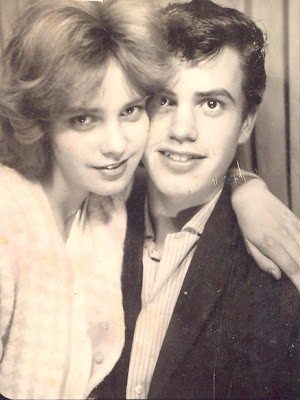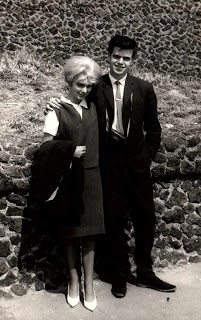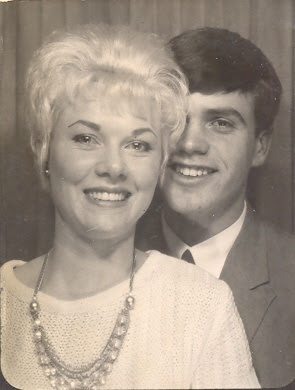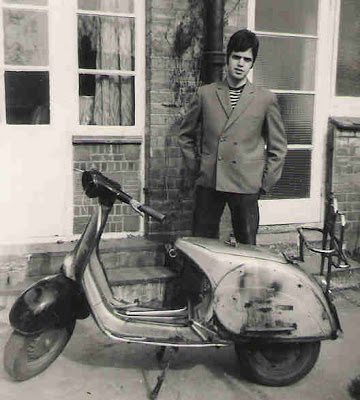The transition from ted to mod is recorded in some detail by Rob Nicholls of London.



Early 1963: Photo at Royal Dance Palace with unidentified friend. My hair is soft with a brushed over fringe. I’m wearing my grey double-breasted suit, a white shirt with a high winged-tip collar, and a tiny knot in my tie

These consist of a short box-shaped, double-breasted jacket worn over a “Pedro” tee shirt with horizontal stripes, and Levi jeans. My hair is layered with long sideburns and the pompadour look of my Mod days.
In April 1963 I bought a Vesper GS Scooter but by November 1964 it had been stolen and trashed
In order to dance to such music we attended “Under 21 Night” on Tuesdays at the Royal, a large dance palace in Tottenham. There was a dress code—No Teddy Boys. So although my hair was still brilliantined with a DA at the back, I’d wear a dark Italian style suit and tie, with winkle picker shoes. The Royal had an impressive play list which included: Johnny Otis’ “Willie and the Hand Jive (released 1958), “Sea Cruise” by Frankie Ford (1959); “Money” by Barrett Strong (1959); “Shop Around” by the Miracles (1960); “Stay” by Maurice Williams (1960); and “New Orleans” Gary U.S. Bonds (1961). Around October 1962, I began to develop a new sense of style. At the Royal I saw young men with neat clothes, soft hairstyles, and a clean, well-groomed look. I made friends with Jerry T and Mel H. Both had been wearing modish styles of clothes for a year or more. These young men and their circle were a cut above others of my peers in that they had passed the eleven plus and had the self-assurance of Grammar school graduates. When I met them both Jerry and Mel wore Pierre Cardin style collarless jackets (later known as Beatle jackets). Mel’s was dark blue and short and was cut away and rounded at the front, appearing a little like an Eton jacket. The collar of his white shirt was high in Eton style and although his tie was quite broad it had a tiny knot that almost disappeared under the collar. Jerry’s and Mel’s friend Roger D was notably dapper and when we went to the Royal he wore old-fashioned spats over his shoes and carried a brolly.
The end of my relationship with Pat S. around August 1962 precipitated my change of style and my becoming a Mod.
But, whatever the case, it seems the term Face may have predated the term Mod. A 1962 Town article about Mark Feld (Marc Bolan) is titled, “Faces without Shadows,” and establishes the use of the term Face to describe young clothes-conscious, club going, trend-setting and innovative Londoners, such as Marc Felds was in those days. Interestingly, the article does not use the term Mod, nor even Modernist, which reinforces the idea that the term Faces was being used before the term Mod. That there were Mods in 1962 is unquestioned, I myself became a Mod (or pre-Mod as I term it) about September 1962, which is when I first saw squads of scooter boys wearing parkas with bell bottoms, and I joined a fashion that was already underway, but I don’t remember anyone using the term Mod at that time.
I am just trying to be historically accurate and I have simply relied on my own memory. Although I heard the term “modernist” earlier, I don’t remember hearing “mod” before 1963. So your Dad adding his name to his 1962 memory would help clear that one up.
For sure there were “mods” in 1962, that’s when I became one. Even in 1961, I remember Covent Garden boys from the fruit market at the lunchtime dances at the Lyceum in Aldwych with mod hairstyles and clothes, but I never heard them called anything beyond stylish young men.
Regarding violence, or in my memory, lack of it. In the London Mod clubs that I went to I didn’t witness any violence. Apart from a rocker enclave at “Alley Palley,” there were hardly any rockers in London.
Post Comment